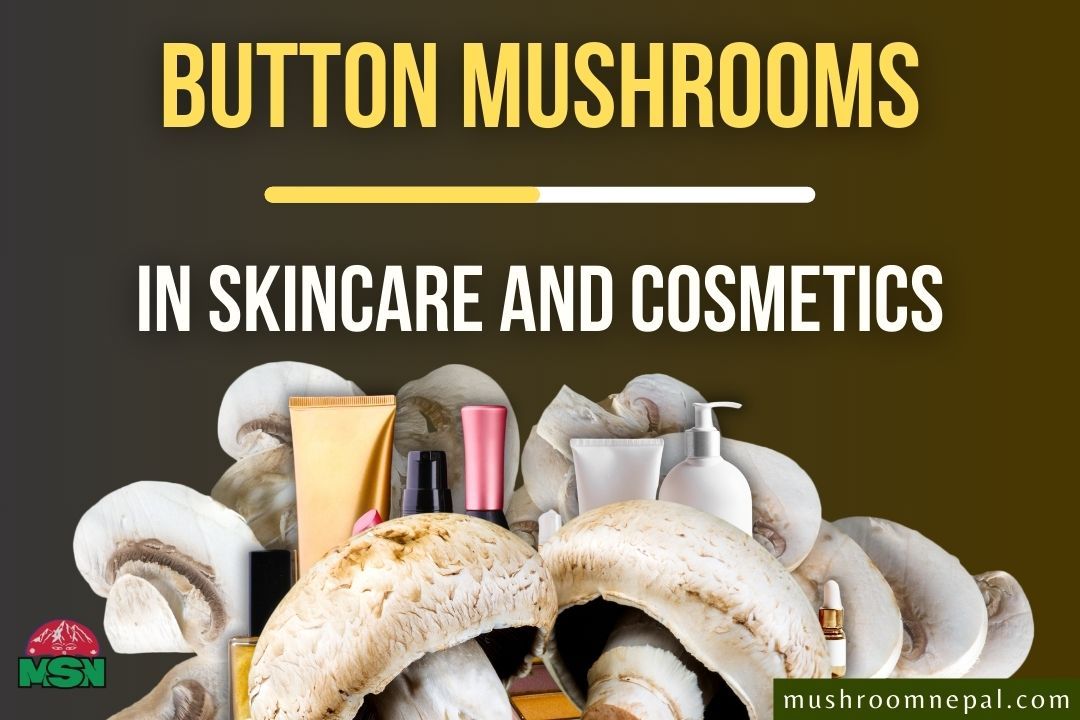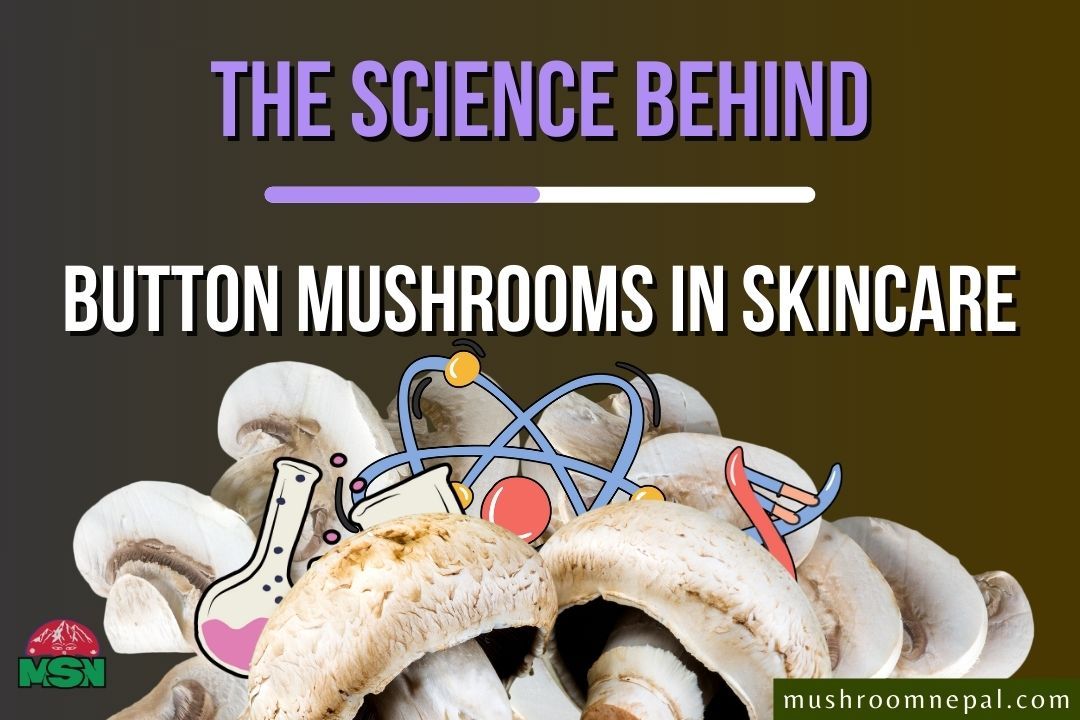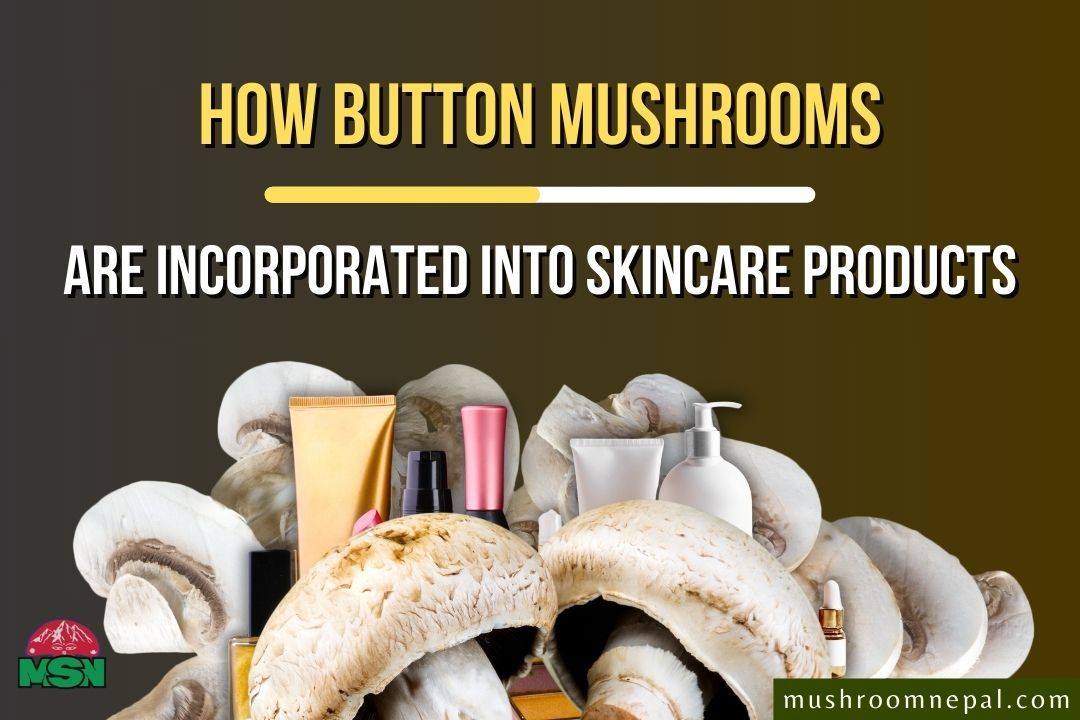Button Mushrooms in Skincare and Cosmetics

The Science Behind Button Mushrooms in Skincare and Cosmetics
 Button mushrooms contain bioactive compounds that provide great benefits to our skin health. Studies have highlighted different biological properties that set them apart as a beneficial ingredient in cosmetics:
Button mushrooms contain bioactive compounds that provide great benefits to our skin health. Studies have highlighted different biological properties that set them apart as a beneficial ingredient in cosmetics: Antioxidants: Ergothioneine and selenium
Button mushrooms contain ergothioneine, which is an antioxidant that protects our skin cells from oxidative stress caused by the environment (e.g: UV exposure and pollution) (Dubost et al., 2007). Selenium is another antioxidant that neutralizes free radicals, preventing premature signs of aging, such as fine lines and wrinkles.Anti-inflammatory properties
Polysaccharides and phenolic compounds from button mushrooms show anti-inflammatory properties, which calm irritated skin and reduce redness, making them a great choice for sensitive skin types or for use with sensitive skin issues such as acne and rosacea (Taofiq et al., 2016).Hydration and skin barrier support
Button mushrooms are composed of high levels of polysaccharides, which provide moisturization. Polysaccharides also strengthen our skin barrier, which maintains a plump, hydrated appearance (Choi et al., 2014).UV protection potential
Mushrooms contain compounds such as mycosporine-like amino acids (MAAs) that may provide slight UV-protective properties (together with sunscreens), which can reduce UV damage to our skin (Cardozo et al., 2011).Brightening and Anti-Aging Effects
Button mushrooms contain kojic acid, a natural skin-brightening agent that helps fade dark spots and hyperpigmentation. Their antioxidant properties also support collagen production, improving skin elasticity and reducing the appearance of aging (Brennan et al., 2012).
How Button Mushrooms Are Incorporated into Skincare Products
 Button mushrooms are also very versatile and can be used in different types of cosmetics. Here are ways that button mushrooms are being used in the beauty industry:
Button mushrooms are also very versatile and can be used in different types of cosmetics. Here are ways that button mushrooms are being used in the beauty industry: Mushroom Extracts in Serums and Creams
Button mushrooms are added into serums, moisturizers, and anti-aging creams because they are antioxidant-rich and hydrating. Products made with button mushroom extracts help address and target fine lines, dullness, and uneven skin tone.Face Masks and Exfoliants
Face masks and exfoliants that are mushroom-based leverage the anti-inflammatory and brightening benefits of button mushrooms to calm and brighten the skin. Sometimes dried and powdered button mushrooms are mixed with other natural ingredients such as clay or oats for gentle exfoliation.Toners and Essences
Toners and essences containing mushrooms can add hydration lightweight hydration while also prepping the skin for products that follow. These products promote moisture retention, as well as soothe irritated skin.Natural Sunscreens
While mushroom extracts are not meant to replace a standard SPF, mushroom extracts are being explored in natural sunscreens to provide more UV protection and repair sun damage.Clean Beauty and Vegan Product
Button mushrooms as a plant ingredient are attractive to the clean beauty community, as they offer vegan, cruelty-free, and sustainable element in skincare products.Conclusion
Button mushrooms are not only a popular household ingredient, they are also a new star in the skincare and cosmetics space. They contain antioxidants, anti-inflammatory properties, and hydrating elements that make them a powerful ingredient for problems ranging from aging issues to sensitive skin concerns. Consumers can choose mushroom-based products and support sustainability while utilizing what nature has to offer us: mushrooms. Whether through a store-bought serum or homemade mask with mushroom powder, button mushrooms offer a natural, efficient, and sustainably-minded option for healthy, glowing skin!
References:
Brennan, M., et al. (2012). Kojic acid production by Agaricus bisporus. Journal of Agricultural and Food Chemistry.
Cardozo, K. H. M., et al. (2011). Mycosporine-like amino acids in fungi. Fungal Biology Reviews.
Choi, S. I., et al. (2014). Polysaccharides from mushrooms enhance skin hydration. International Journal of Cosmetic Science.
Dubost, N. J., et al. (2007). Quantification of polyphenols and ergothioneine in cultivated mushrooms. Food Chemistry.
Regnier, T., et al. (2018). Nutritional quality of organic versus conventional fruits, vegetables, and mushrooms. Journal of the Science of Food and Agriculture.
Taofiq, O., et al. (2016). Anti-inflammatory potential of mushroom extracts. Food & Function.